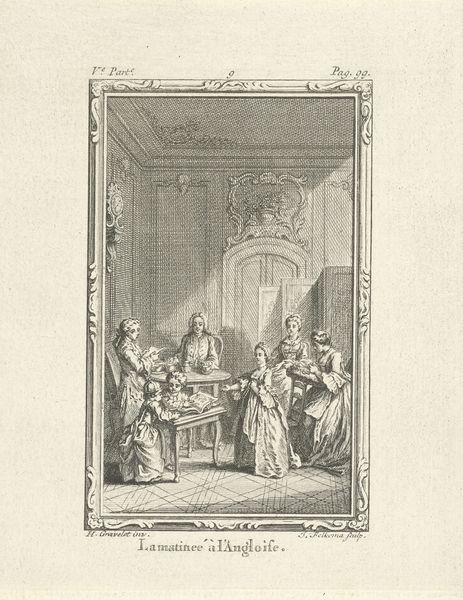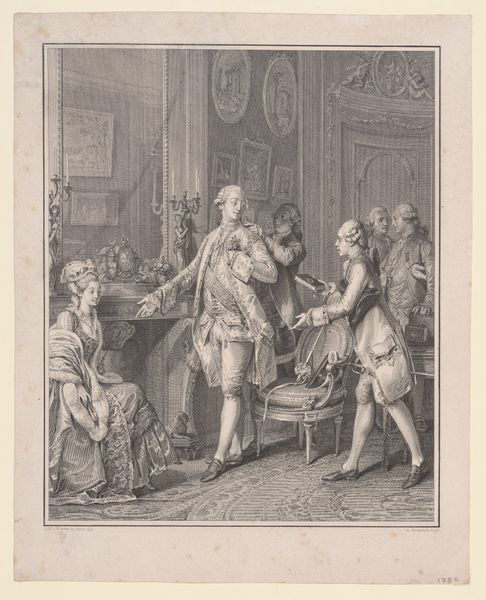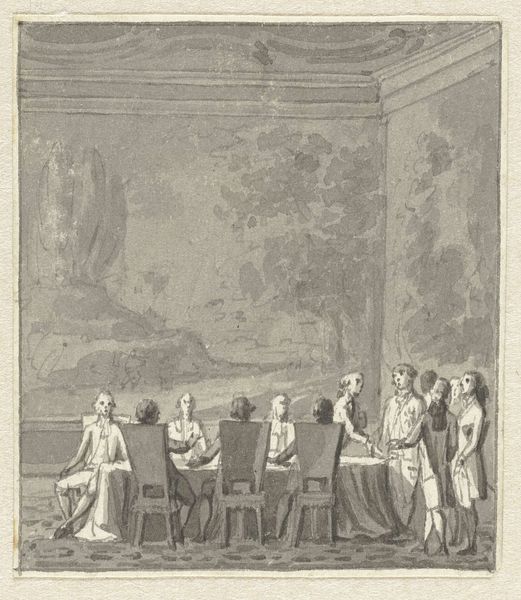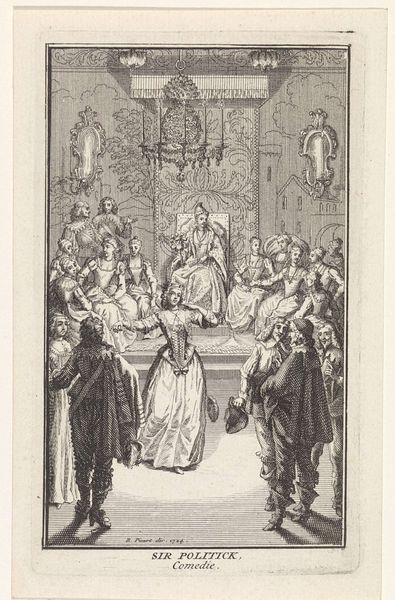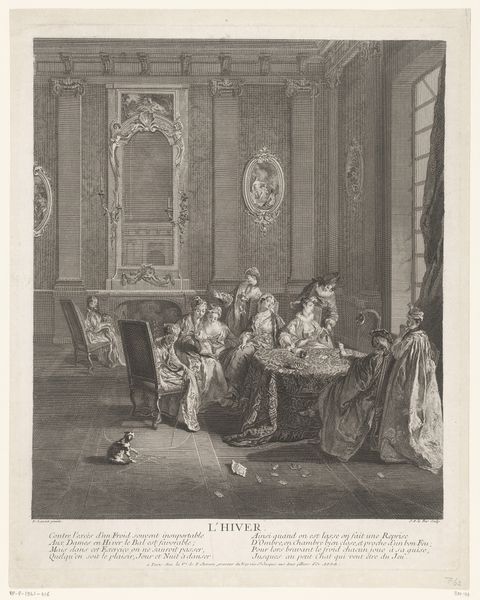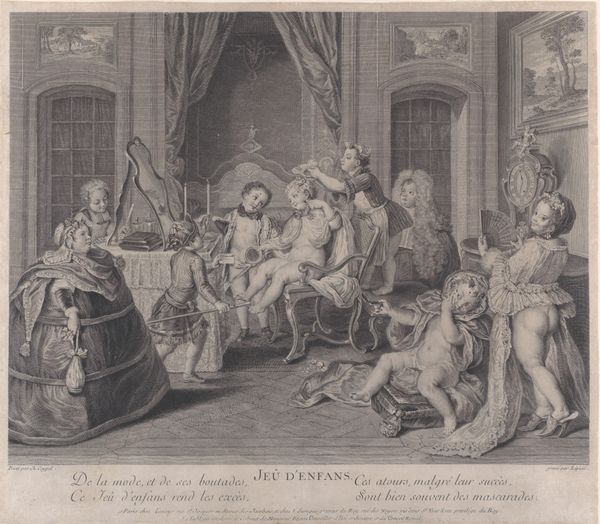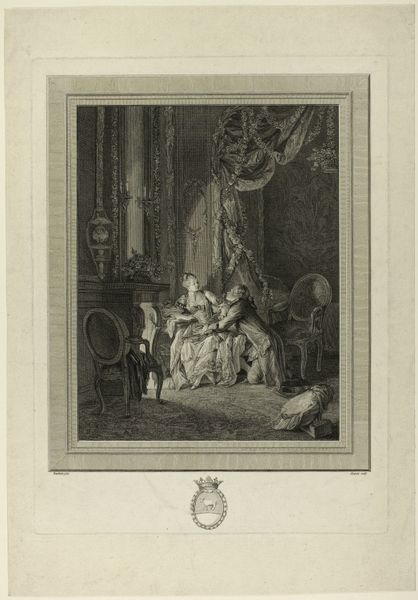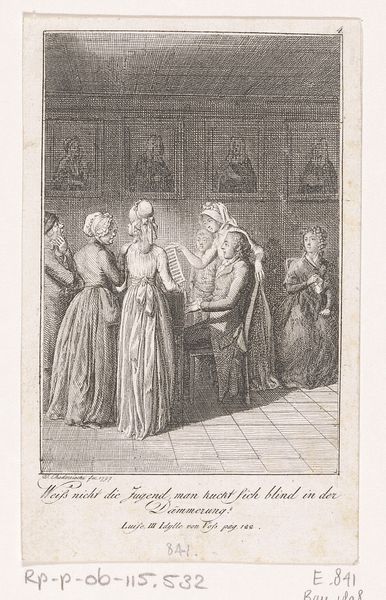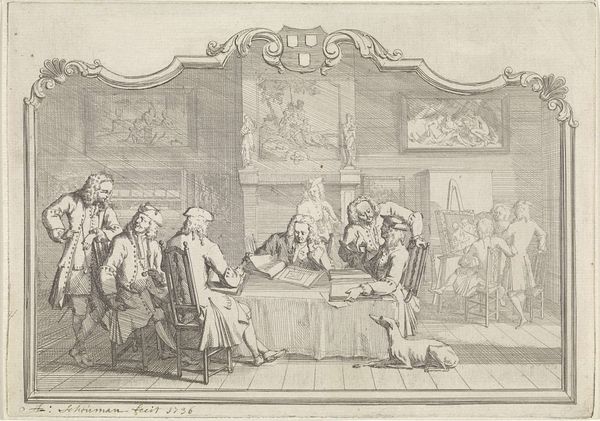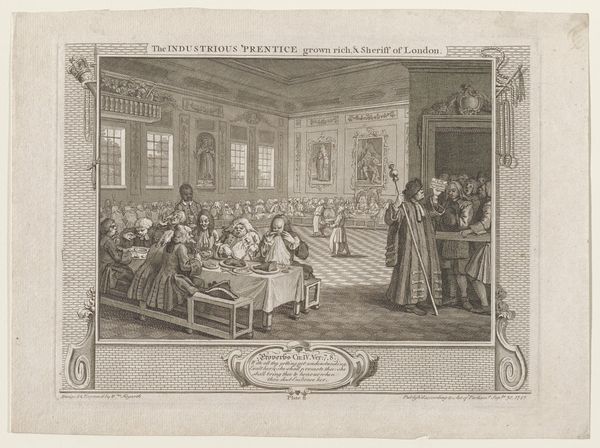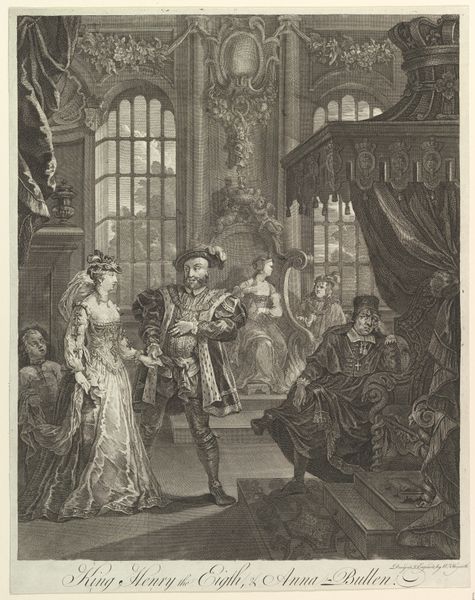
Plate 30: Don Quixote consults the enchanted head at Don Antonio Moreno's house (Don Quichotte consulte la teste enchantée chez Don Antonio Mereno) 1745
0:00
0:00
drawing, print, engraving
#
portrait
#
drawing
#
narrative-art
#
baroque
# print
#
figuration
#
line
#
genre-painting
#
history-painting
#
engraving
Dimensions: Sheet (Trimmed): 8 5/8 × 6 9/16 in. (21.9 × 16.7 cm)
Copyright: Public Domain
Curator: This is Plate 30 from Jacob van der Schley's illustrations of Don Quixote, made around 1745. Titled "Don Quixote Consults the Enchanted Head at Don Antonio Moreno's House," it is currently held at the Metropolitan Museum of Art. Editor: The sheer level of detail in this engraving is captivating. I’m struck by the spatial arrangement; there’s a tension created between the ornate, receding rooms and the central gathering around the table. Curator: Indeed. The composition invites us to explore the scene through its calculated lines and balanced forms. Notice how the vanishing point draws your eye toward the rear of the room. What meaning do you derive from the distribution of light? Editor: Well, the etching and engraving show a range of social textures – the labor obviously reflecting a privileged domestic sphere. But consider, too, the printmaking process: The physical act of carving, inking, and pressing creates this proliferation of images, each one slightly different and reaching a wide audience. Curator: That's a fascinating observation. Semiotically, the stark monochrome directs our gaze toward pivotal aspects: gesture, facial expression, posture. There’s a complex web of visual clues revealing the core of Cervantes's story. Editor: And I would suggest the social context is inseparable. Look closely – the clothes are an advertisement for luxurious fabrics, hand-sewn and meticulously designed to announce one’s social station. I think it’s critical to recognize the material resources, and the skilled labor required for such an elevated portrayal. Curator: However, let us return to the composition. Consider how the formal structure, with its interplay of curves and verticals, underscores the themes of illusion versus reality, sanity against madness. How the scene embodies both order and disorder through carefully considered line and shade. Editor: Of course, yet without those very specialized processes, all that nuance you've described simply could not come into being, and stay limited to a unique and unreachable painting, viewed maybe by a few privileged viewers. This one print means more views than could have ever been afforded without its processes. It all shows a story of materials, dissemination, and social life of things. Curator: You've given us a great appreciation of this engraving as an artifact of labour. It highlights how method becomes inextricably bound to visual form, inviting layers of socio-cultural exploration and interpretation. Editor: Yes, it speaks volumes not only about storytelling, but about how art's production and distribution can influence how the narrative unfolds within society.
Comments
No comments
Be the first to comment and join the conversation on the ultimate creative platform.
